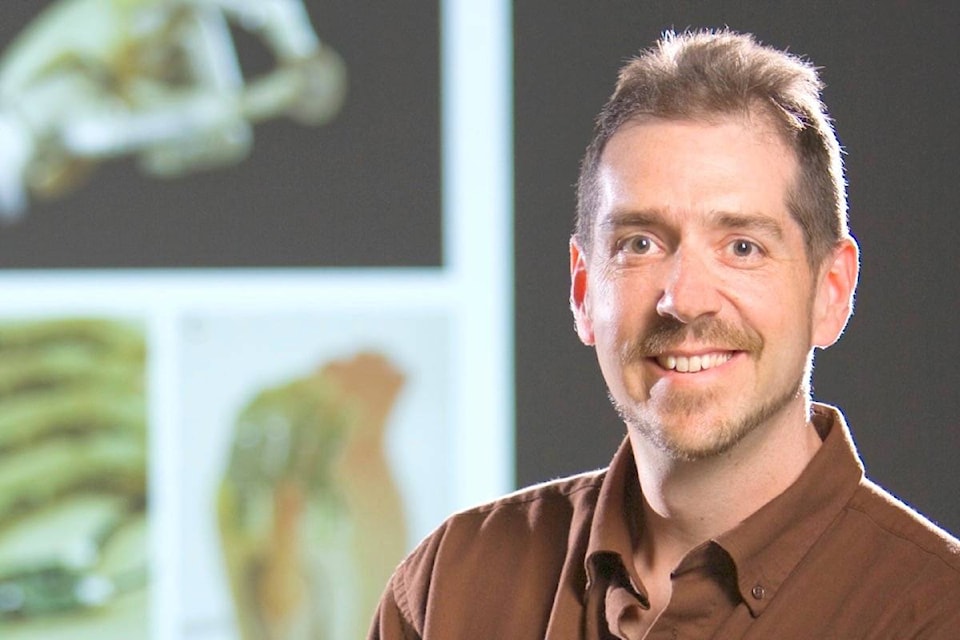A neuroscientist at the University of Victoria is headed to Nanoose Bay on April 22 to talk about science.
And he’s going to do it using superheroes.
In true comic book fashion, Paul Zehr’s own origin story may help to explain what he’ll be discussing at the Nanoose Elder College Speaker’s Series event.
Zehr works in rehabilitation, particularly with people who have had a stroke or spinal cord injury. But it was martial arts that got him into science.
Zehr began training as a teenager, and was fascinated with the strength and precision that could be achieved with the human body, and the complicated ways it could move.
Zehr has been a martial arts practitioner for 35 years, and researches the nervous system and its ability to heal after injury.
About 10 years ago, he grew discouraged by most people’s lack of understanding about their own bodies and what they’re capable of.
“Most people have a better knowledge of how their computer or their phone works than they do about how their own body functions,” said Zehr. The problem with that, he said, is people end up falling for fad diets or supplements or strange exercise equipment that really doesn’t do anything.
He said he realized most people just don’t learn the same things that he has.
“Why would somebody know that that exercise thing that you can get for 43 payments of $19.95, and if you act now we’ll send two from a TV infomercial — why would they know that doesn’t make sense?”
So Zehr decided to work against what he saw as a “tide of misinformation,” and start educating the public.
He knew he needed a way to explain scientific concepts in ways that people would find intriguing. After all, if people were already interested in this stuff, they would probably learn about it themselves.
So, when he wrote his first popular science book, he used Batman as an example.
“It’s been estimated that, like, four billion people on Earth know who that character is,” said Zehr. “They see Batman, they think of athleticism and his abilities, and of course gadgets and so on, but they’ve got an image in their head.
“And then when I talk about Batman in this context, I’m talking about… what of that is real and what isn’t real? What can a human being really do? Once you use superheroes, they become foils for exploring really the extreme limits of human abilities.”
One of the points he likes to draw using Batman is that Batman isn’t really the best at anything — he’s not the fastest, he’s not the strongest, he can’t jump the highest. But he’s the best at being Batman, and he’s a superhero because he’s very good at a lot of things.
“It’s in fact better for people to be good at lots of things rather than to just be good at one thing,” said Zehr. “Our society now allows us to just run marathons, or just do strength training or something like that, but for overall health you should do some strength training and some running and some walking and some cycling and stretching — a variety of things because our bodies need a variety of different stresses. Batman takes these things to the extreme, but he stands as a good example .”
Another point he makes with superheroes, especially those that are human and must train to become heroes, is that their training regimen actually has a lot in common with people in physical rehabilitation.
“Some of these training principles that are so powerful when you are weak, they are moderately successful (in healthy people), but for an extreme athlete or an Olympic athlete, those techniques can take you from fourth place to a gold medal because we are talking about very small differences,” said Zehr.
“And it’s the same thing at the low-performance level where you can’t walk. Well, lots of extreme training can help you take a few steps, whereas you might not notice that if you already have good health and aren’t injured.”
Also, just like for Bruce Wayne to become Batman, rehabilitation takes a lot of work. “(Rehabilitation patients) really have to have that mindset that Olympic athletes have, or the Batman mindset where you have to really, really lay it all out there and try as hard as you can, because that’s how you push your nervous system and your muscles to respond.”
Zehr is volunteering through Vancouver Island University’s ElderCollege as a Saturday Speaker on April 22 at Nanoose Place at 10 a.m. The event is free for high school and middle school students, $5 for university students and $10 for the general public at the door.
